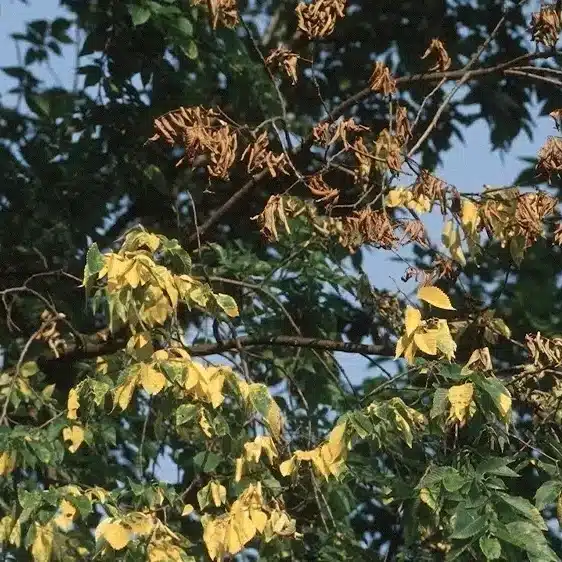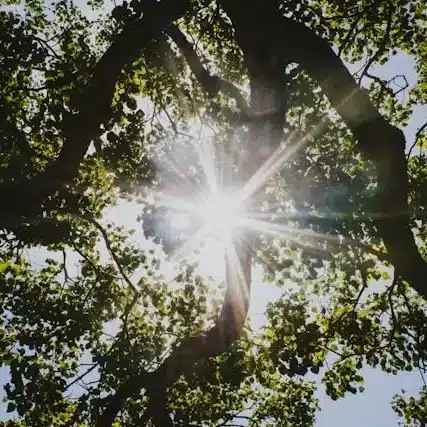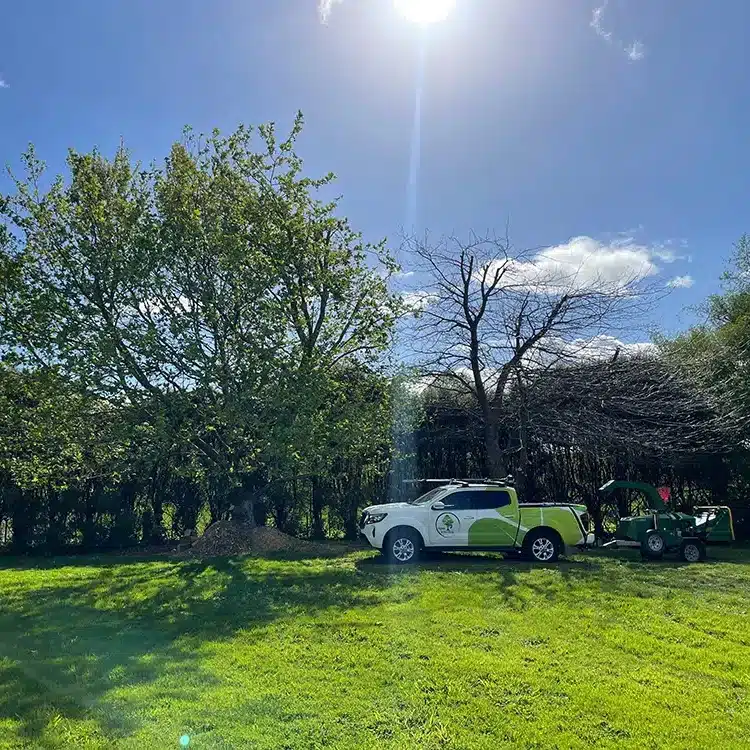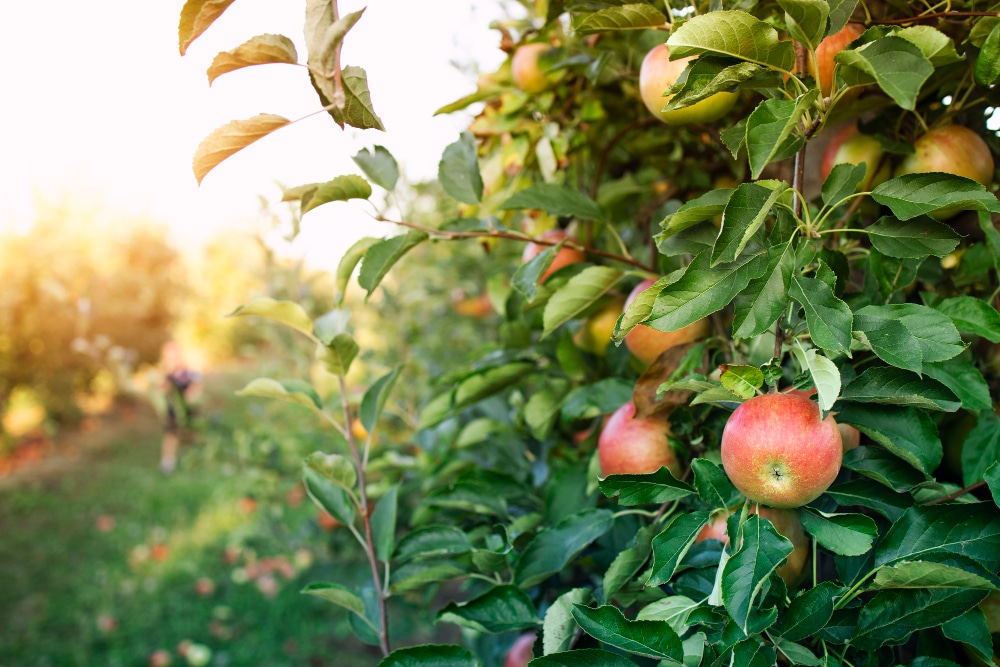
Many Kiwis don’t know that New Zealand offers a diverse environment for fruit trees, successfully growing a wide array of species although we are best known for growing and exporting kiwifruit and apples.
Kiwifruit is the country’s most sought-after fruit export, bringing in substantial revenue each year. In 2021, the value of Kiwifruit exported from New Zealand amounted to a whopping $2.7 billion NZD.
All of these reasons are enough to understand the importance of knowing how to properly prune fruit trees in New Zealand. So if you are a fruit tree enthusiast looking to master the art of pruning fruit trees then look no further.
Whether you’re a seasoned horticulturist or a beginner with green thumbs, this arborist’s guide to pruning fruit trees in New Zealand will help you master the art.
How to Prune Fruit Trees in New Zealand

Here are some proven arborist tips and tricks on how to properly prune fruit trees in New Zealand:
-
Tools: Use clean, sharp pruning shears (secateurs) to make precise cuts which ensures clean cuts promoting faster healing of the tree, which also helps reduce the risk of diseases spreading.
-
Prune dead or diseased branches: Remove any dead, damaged, or diseased branches first, making clean cuts just outside the branch collar. Don’t prune the fruit buds while doing so as doing this can negatively affect the harvest.
-
Shape and structure: Consider the desired shape and structure of the tree. Remove any crossing branches, inward-growing branches, or branches that are crowding the canopy.
-
Thinning: Thin out excess branches to improve air circulation and light penetration, which helps prevent disease and promotes better fruit production. This also ensures that the main branches are getting all the essential nutrients for excellent fruit growth.
-
Avoid over-pruning: Never prune back more than about a third of the tree’s growth at once to avoid stressing the tree. Make sure you prune the silver leaf but don’t prune off the fruit bud.
-
Use pruning paste: No matter if you are a beginner or a seasoned expert you should always use a pruning paste. This paste helps seal and protect pruning cuts in all fruit trees. Use an applicator burst to apply the pruning paste to seal the pruning wounds.
When to Prune Fruit Trees
The timing for pruning fruit trees in New Zealand can vary depending on the type of fruit tree and the goal of the pruning. For most fruit trees, the best time to prune is after fruiting has finished. For summer fruit such as peaches, nectarines, plums and apricots this is typically around mid-late summer. For Autumn fruiting trees such as apples, pears and feijoas, you are best to prune in the Winter when the growth phase has finished.
Why is Winter a Good Time to Prune Dormant Fruit Trees?
Winter is considered a good time for pruning dormant trees in New Zealand for several reasons:
-
Stimulates new growth: Pruning during winter dormancy delays the growth response until spring, which is an ideal time for new growth to occur as plants will have access to plenty of sunlight, nutrients, and moisture. This also helps to get rid of the dead or diseased wood.
-
Prevents sap weeping: In late winter, fruit trees still dormant, meaning that pruning cuts will not weep sap and the cut will heal better.
-
Encourages healing: The dormant season, when trees are at rest, is the best time for them to heal. Fruit tree pruning before new growth begins exposes them to less stress and allows them to recover more effectively.
-
Enhances visibility: During winter, deciduous trees lose their leaves, improving visibility and making it easier to see the branch structure. This makes it easier to determine which branches need to be pruned. It’s best to prune these fruit trees into a vase shape for better growth.
Pruning Apple Trees
There are various apple tree varieties grown in New Zealand, including Ava, Braeburn, Dazzle, Diva, Early Queen among others. Consult with a professional fruit tree arborist for detailed guidance on pruning techniques specific to apple variety if you are unsure.
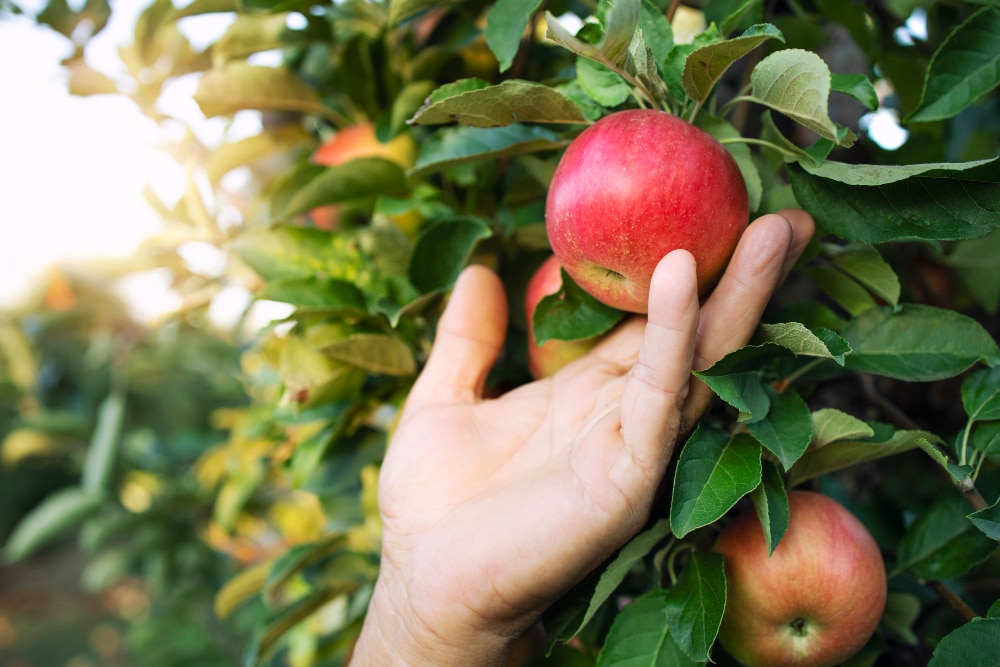
When to Prune Apple Tree
We recommend pruning apple trees only after fruiting has finished. The best time to prune apple trees in New Zealand is typically during winter when the apple trees are still dormant.
Prune Feijoa Trees
The feijoa tree is a flowering plant native to southern Brazil and is widely cultivated in New Zealand. Popular varieties of feijoa trees grown in New Zealand include Apollo, Unique, Mammoth, and Triumph among others.
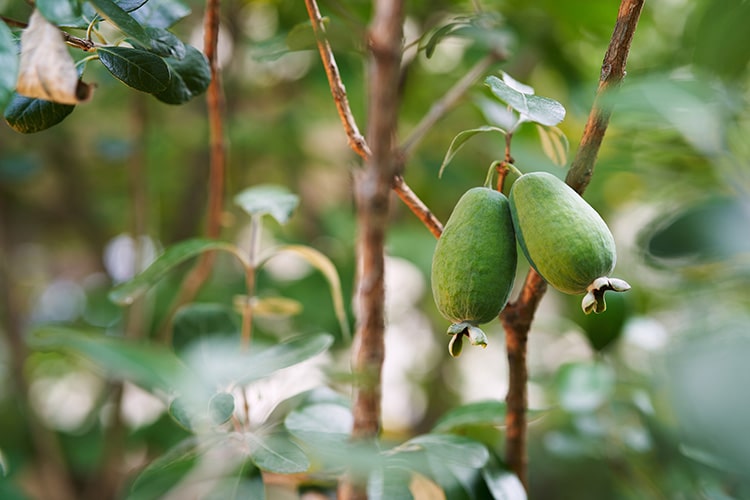
How to Prune Feijoa Tree
Some pruning tips for Feijoa trees include removing the longest branches (both in height and width) and thinning out dense areas by completely removing a few branches.
When to Prune Feijoa Tree
To prune a Feijoa tree in New Zealand, it is generally recommended to wait until after fruiting has finished, which is typically in late March or early April.
Pruning Plum Trees
Plum trees are commonly grown in New Zealand, some notable plum tree varieties grown in New Zealand include Billington, Black Doris, Burbank (Japanese), Damson, English Greengage, Omega, Santa Rosa, Shino and Wilson’s Early’.
How to Prune Plum Tree

Pruning a plum tree in New Zealand includes thinning out the centre of the tree, removing branches that are crossing over, dead, or diseased, and encouraging growth for three to five main leader branches. Excessive pruning can stop the vigorous growth in trees by eliminating fruiting wood, so its important to make sure you are careful while pruning plum trees.
When to Prune Plum Tree
To prune plum trees in New Zealand, it is generally recommended to prune them in winter when they are dormant.
Prune Apricot Trees
Apricot trees are grown in New Zealand, particularly in regions like Central Otago. Some varieties of apricot trees cultivated in New Zealand include ‘Aurora,’ ‘Trevatt,’ ‘Clutha Gold,’ ‘Moorpark,’ and ‘Perfection’.
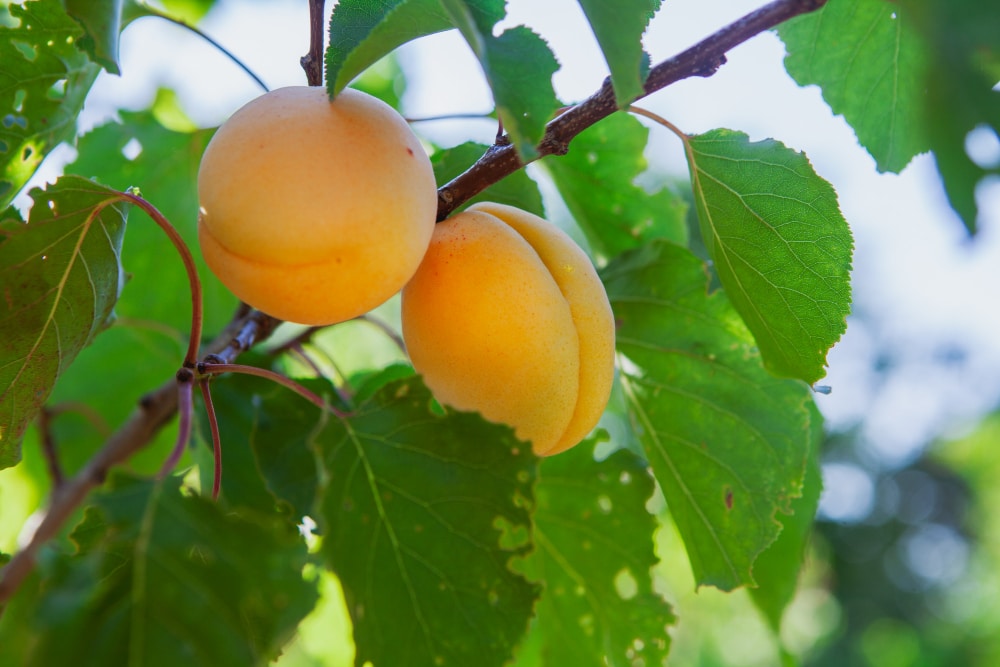
How to Prune Apricot Tree
When Pruning apricot trees you should remove the tips of new side shoots when they reach about 7cm long to encourage fruiting spurs and this should be done in late spring. You should do summer pruning in late summer to promote the growth of new plum tree branches, resulting in increased apricot production the following year.
When to Prune Apricot Tree
Apricot trees in New Zealand should be pruned in autumn, early winter, or early spring before they start producing new growth.
Prune Peach Tree
Peach trees are grown in various regions of New Zealand, including the North Island and areas with ample rain but dry, hot summers. Some varieties of peach trees cultivated in New Zealand include ‘Golden Grace,’ ‘Golden Haze,’ ‘April White,’ ‘Red Haven,’ ‘Snow Grace,’ and ‘Snow Bright’.
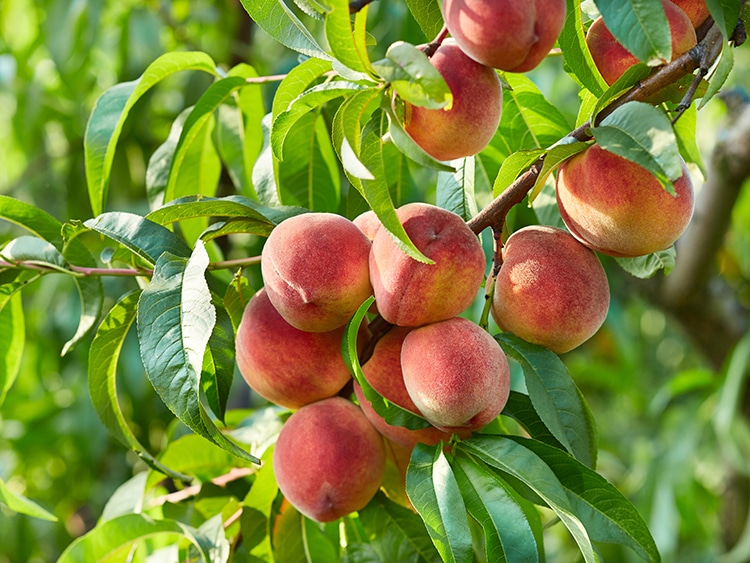
How to Prune Peach Trees
Trim back long lateral branches to promote branching and fruiting and thin out crowded areas to improve air circulation and reduce the risk of fungal diseases that are common in peach trees. However, you should avoid heavy pruning for a peach tree as it can reduce fruit production.
When to Prune Peach Trees
Being professional fruit tree arborists, we recommend to prune peach trees during winter while they are dormant or during early spring before bud break.
Prune Pear Tree
The pear tree in New Zealand that holds historical significance is the Kerikeri pear tree, planted in 1819 by Samuel Marsden and considered the oldest surviving exotic tree in the country.
In New Zealand, various pear tree varieties are grown, including Williams Bon Chretien (Bartlett), Beurre Bosc, Packham’s Triumph, Conference, Doyenne du Comice, and Winter Nelis
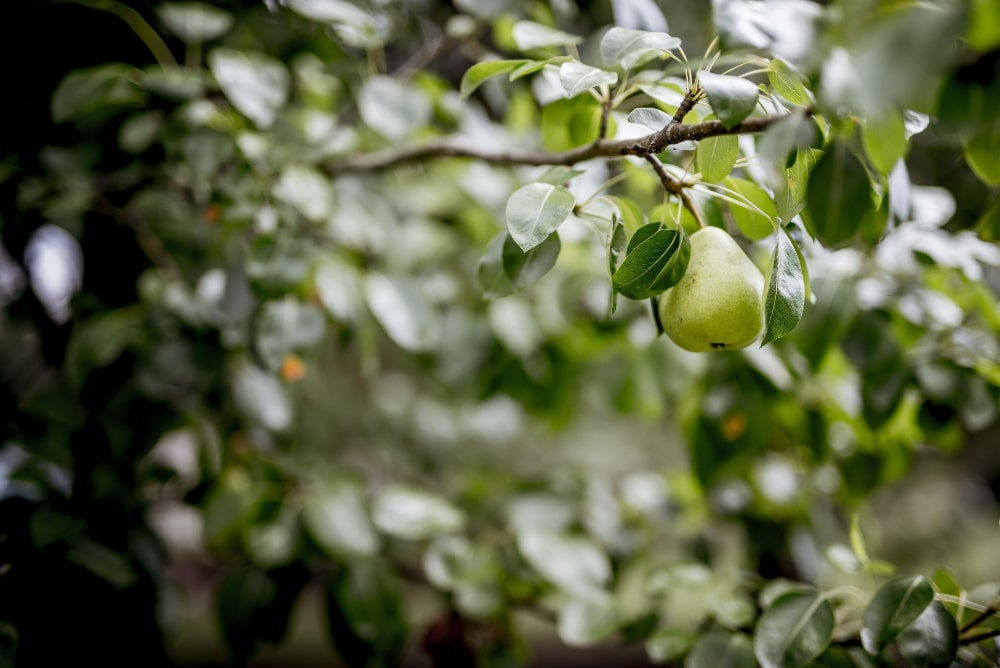
How to Prune Pear Trees in New Zealand
When pruning pear trees, we recommend cutting just above each growth bud and removing any dead or diseased wood, making sure to cut through healthy tissue below the affected area. Be careful not to trim the flower buds as this can negatively impact all the fruit you can get.
When to Prune Pear Trees in New Zealand
We recommend pruning the pear tree during Winter when the trees are dormant. This should be done after the growth phase has passed, which is typically in autumn. This also helps grafted trees and promotes young tree growth.
Contact a professional Arborist to help with your fruit trees today
To get the maximum harvest from your fruit trees in New Zealand, it’s essential to invest in professional arborist services. Apex Arborists, with our experience, knowledge, and dedication to tree care, can help you achieve all your goals for your fruit trees.
Whether it’s pruning, tree health assessments, or tree removal, our team of qualified arborists is equipped to handle all aspects of fruit tree care. Contact Apex Arborists today to optimise the productivity of your fruit trees and enjoy a bountiful harvest.


